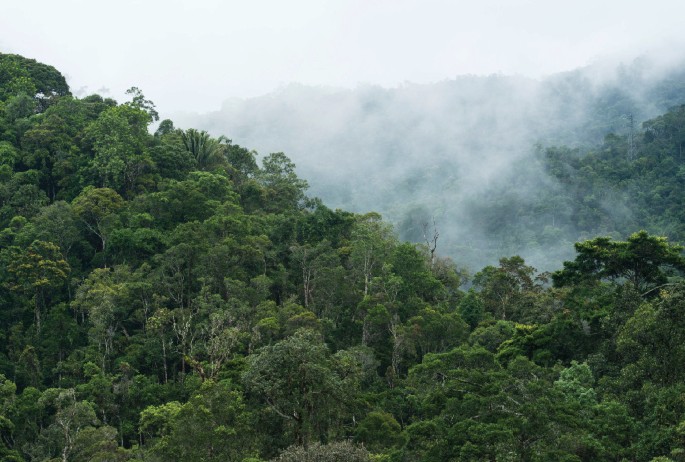What are the main challenges facing conservation efforts today?
Taking Action: Conservation Interventions Have Impact, But More is Needed
Conservation interventions are crucial for protecting our planet’s biodiversity and natural resources. While progress has been made in addressing environmental and wildlife conservation issues, there is still a clear need for additional efforts to ensure the long-term sustainability of our ecosystems. In this article, we will explore the impact of conservation interventions, the challenges we face, and the actions we can take to make a difference.
The Impact of Conservation Interventions
Conservation interventions, such as protected area management, habitat restoration, and species conservation programs, have proven to be effective in preserving biodiversity and safeguarding natural ecosystems. These initiatives have helped prevent the extinction of endangered species, restore degraded habitats, and mitigate the impact of human activities on the environment.
Moreover, conservation interventions have significant economic and social benefits. They support local communities by creating employment opportunities, promoting eco-tourism, and securing essential resources for human well-being, such as clean water and food.
Case Study: The Impact of Protected Area Management
| Country | Protected Area | Biodiversity Impact |
| Kenya | Maasai Mara National Reserve | Preservation of African elephants, lions, and other iconic species |
| Costa Rica | Monteverde Cloud Forest Reserve | Protection of rich biodiversity, including rare bird species and diverse plant life |
The Challenges We Face
Despite the positive outcomes of conservation interventions, we are confronted with numerous challenges that hinder our progress in preserving our planet’s natural heritage. These challenges include:
- Habitat destruction due to deforestation, urbanization, and industrial development
- Illegal wildlife trade and poaching
- Climate change and its impact on ecosystems
- Human-wildlife conflict
Furthermore, funding shortages and inadequate policy enforcement pose additional obstacles to effective conservation efforts.
The Actions We Can Take
It is clear that more action is needed to address the challenges facing conservation and to ensure the sustainability of our planet’s natural resources. Here are some practical steps that individuals, communities, and organizations can take to make a positive impact:
Benefits and Practical Tips
- Support conservation organizations and initiatives through donations and volunteer work
- Adopt sustainable practices in daily life, such as reducing energy consumption and waste generation
- Advocate for environmentally friendly policies and participate in community-based conservation projects
Firsthand Experience
One example of a successful conservation initiative is the community-led conservation program in Namibia, where local communities are actively involved in managing natural resources and wildlife. This approach has not only improved biodiversity conservation but has also enhanced community livelihoods and fostered greater public awareness of conservation issues.
Conclusion
Conservation interventions have undeniably made a positive impact on protecting our environment and wildlife. However, the challenges we face require more concerted efforts from individuals, communities, and governments to ensure the long-term sustainability of our planet’s biodiversity. By taking action and supporting conservation initiatives, we can contribute to safeguarding our natural heritage for future generations.
Conservation Efforts: Effective but Insufficient
Conservation initiatives have proven to be beneficial in preserving natural habitats and protecting endangered species. However, it is important to recognize that these efforts, while impactful, are not enough to address the widespread environmental challenges that we currently face.
The Impact of Conservation Interventions
Conservation interventions, such as the establishment of protected areas and the enforcement of wildlife protection laws, have undoubtedly contributed to the safeguarding of various ecosystems and species. These efforts have helped to prevent habitat destruction and reduce the threat of extinction for many vulnerable plants and animals.
Despite these positive outcomes, the scale of environmental degradation and biodiversity loss remains a significant concern. The threats posed by factors such as climate change, deforestation, and poaching continue to outweigh the impact of existing conservation measures.
The Need for a Comprehensive Approach
In order to effectively address these pressing environmental issues, a more comprehensive and integrated approach is required. This involves not only the implementation of conservation measures, but also the promotion of sustainable land use practices, the mitigation of climate change impacts, and the involvement of local communities in conservation efforts.
Furthermore, it is crucial to recognize the interconnectedness of ecological systems and the need for a holistic approach to conservation. This includes the consideration of broader ecosystem health and the promotion of biodiversity across landscapes, rather than focusing solely on individual species or habitats.
Addressing the Gaps in Conservation
To bridge the gaps in current conservation efforts, it is essential for policymakers, conservation organizations, and local communities to collaborate on innovative solutions. This may involve the development of new conservation strategies, the use of advanced technology for monitoring and enforcement, and the integration of traditional ecological knowledge into conservation practices.
Additionally, there is a growing need for increased funding and support for conservation initiatives at both the local and global levels. This includes investment in research, capacity building, and the establishment of sustainable funding mechanisms for long-term conservation goals.
Looking Ahead
As we look to the future, it is important to recognize the importance of ongoing adaptation and improvement in conservation approaches. By acknowledging the limitations of current interventions and working towards more effective and inclusive strategies, we can better address the complex environmental challenges that lie ahead.
Conclusion
While conservation interventions have shown positive results in protecting natural ecosystems and species, it is clear that they are not sufficient to address the scale of environmental degradation and biodiversity loss that we currently face. A more comprehensive and integrated approach, along with increased collaboration and support, is essential in addressing the gaps in existing conservation efforts and safeguarding the future of our planet.
